Antipodes K50 Music Server – Update Nov 2021
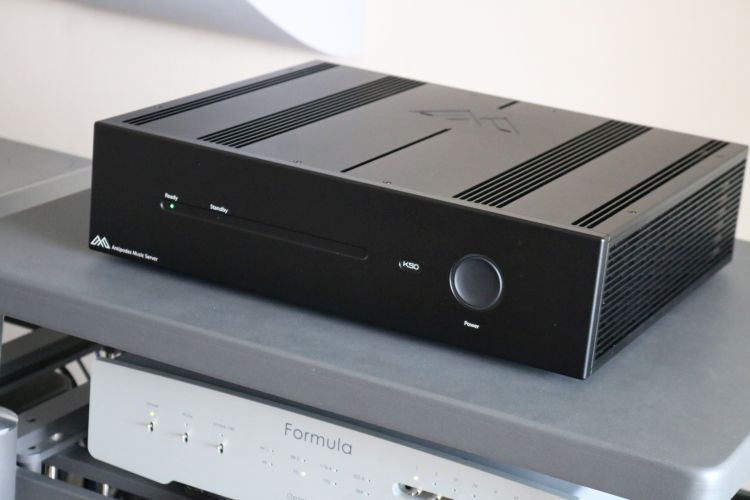
Retail prices in the Netherlands incl 21% VAT:
No internal storage: €15.995
SSD storage prices when installed by the local distributor:
1 TB (€120) / 2 TB (€270) / 4 TB (€630) / 8 TB (€1260) (more options available)
Maximum storage capacity: 24TB (3x8TB)
Discs are also user-installable, if preferred
Available in black or Silver
Recently, Antipodes updated the firmware to from V3.0 to V3.1 to support the upcoming changes in how Roon runs on home servers and they took this opportunity to also further streamline and enhance their User Interface. Interestingly, I also noticed significant sonic benefits with the K50!
But before I dive into this, let me quickly recap the effects of burn-in over the course of the first few weeks and over the course of a few months. It will all tie together, just bear with me.
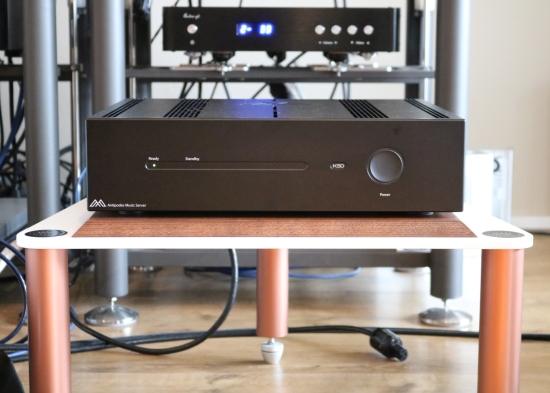
Burn-In
As I explained in the June 2021 update for the initial September 2020 review, Antipodes servers undergo a smooth and slow change in character as they burn-in. As I noticed during first use, the server changed initially after about 3 weeks but there’s also a longer-term effect after about 3 months of use. Presumably, the capacitors and perhaps other parts in its three power supplies just need a little longer.
What happens at this point is that the sound becomes very noticeably smoother and more relaxed. The presentation becomes arguably even richer and more organic while the server retains all of its refinement and soundstaging abilities. The effects are most noticeable in the midrange which is a little hard and relatively forward when the server is new but which relaxes after 3 weeks and becomes fuller and warmer after 3 months. The effect is also noticeable in the bass which remains full-bodied and still impressively solid after 3 months but slightly less tight and incisive than at the 3-8 week mark. Having reached the 8-month mark, I noticed no more changes and so it seems that the server is fully mature at the age of 3 months and remains stable after this.
Antipodes founder and Chief Executive Officer Mark Jenkins explains:
With the types of capacitors used on our motherboards, the burn-in continues for a year, to my ears, with jumps in performance kicking in every 3 months or so. One day about every quarter, it will suddenly just sound better. But this is true of all very high-end gear – even cables – in my experience. You reviewers and us developers do not always get the chance to hear anything for that long a period.
After reviewing the Antipodes K50 in 2020, it has served me without so much of a hiccup and I’m glad to note that after having slowly transitioned from slightly spicy to smooth and organic, it has been sounding entirely consistent ever after. That is, until recently, when the software was updated.
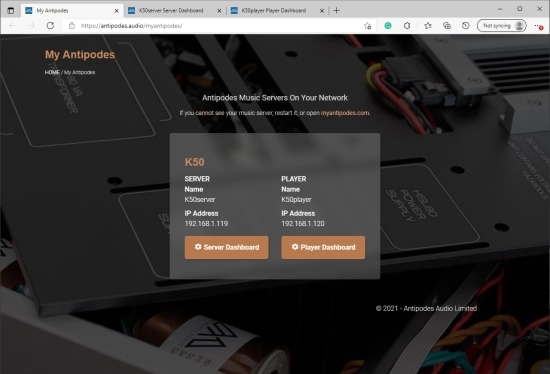
The new myantipodes home screen
Software Updates
Roon Labs announced that an update in November demands extra software that was not installed in many Roon servers based on Linux. In order to support the Roon update, many vendors had to issue updates for their products, and that includes Antipodes.
The company has taken this opportunity to roll out V3.1 of their software not just containing the required updates to keep running Roon but also adding enhancements to other parts of the software, most noticeably in the appearance of the GUI.
You can find all the info pertaining to this update right here.
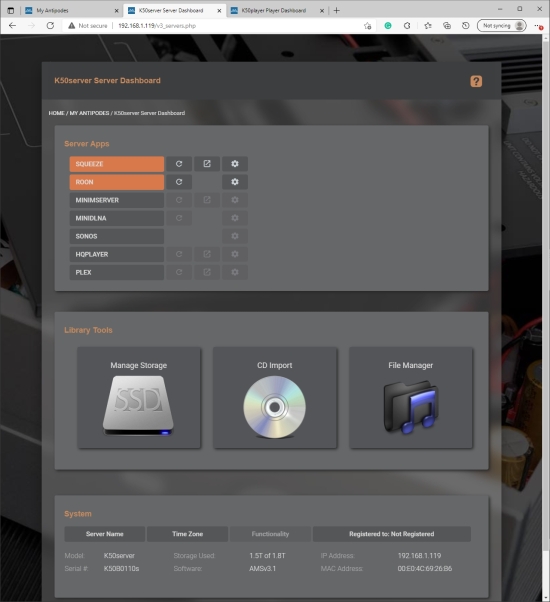
Above: the new Server Dashboard; Below: the new Player dashboard
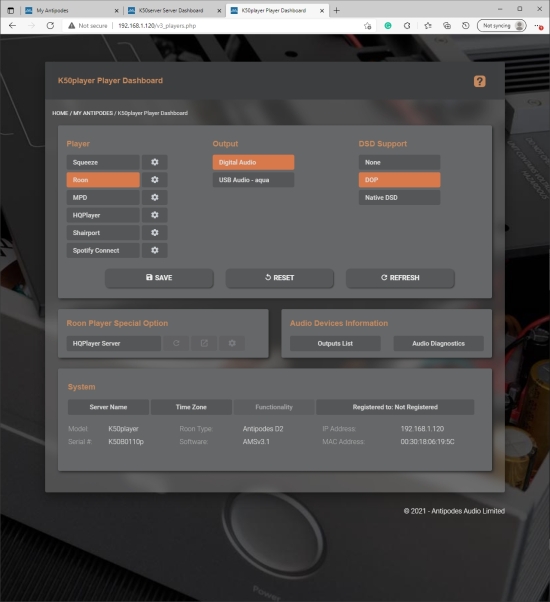
Roon Local Output
Meanwhile, I could no longer find the settings to enable Core Direct in addition to RoonReady. By this I mean the operating system’s “direct” output, as opposed to the Roon “software” output, a feature of which it seems not many are aware. I’ve described the functionality and its effect on the sound in previous reviews so I won’t repeat it here, but suffice to say, its effect depended on whether one was using a standalone server+renderer or a two-fold solution, or indeed the K50, which is a server and a renderer in a single case.
Mark Jenkins explains:
We did remove the Roon local option as it created confusion for many users, resulting in them not getting the best out of their Antipodes. Sometimes having too many options gets in the way, and keeping or removing it was simply a judgment call, based on what we knew about how our customers use our products.
See the Connections section on the Antipodes website for an in-depth explanation of the server and renderer connections and configurations.
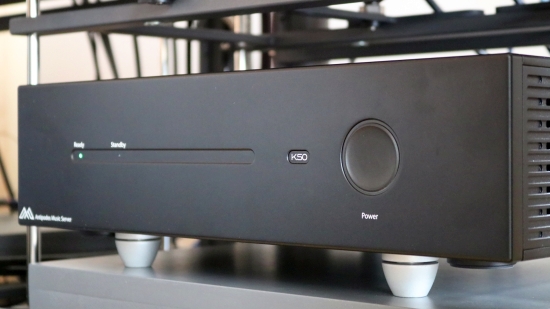
Sound Quality Improvement
As always with any update, my fear is always that it might negatively affect the server’s sound. But having done the same update for the Grimm MU1 server and not having noted a difference, I assumed that the same would happen with the K50. In fact, I did not even actively listen for differences. I just did the update so that I could continue to use the server as I needed it for a DAC review at hand.
Imagine my surprise when I noticed that the K50 sounded remarkably energetic! First, I was using its USB output and I figured that this was one of those occasions where the USB interfaces were a rare match, but upon trying the other outputs, and with other DACs, there was no denying it: the K50’s sound has indeed improved!
The server has retained its smoothness and organic nature, but now, there is a more energetic bounce in its step, with tighter and faster bass than before, and more clarity across the board.
I wondered what caused this. Would it be the Roon- or Antipodes software? Upon running this by Mark Jenkins, he provided the following super-thorough feedback:
We use a stripped-down version of Fedora under our software. Fedora upgrades are very frequent and it would be a nuisance for our customers if we updated the kernel for every incremental change. But every 5 versions or so, we update, and the chosen version usually represents a significant innovation we want. We also stay a few versions behind the latest, to avoid the level of bugs that are always there in the latest releases. Fedora is bleeding edge, so you have to choose carefully.
v3.1 is 5 Fedora versions from v3.0, so there has been a lot of streamlining of the underlying code, and that always helps a little with sound.
But we have been growing our emphasis on software development, and this time we did some additional optimizing of the audio setup for the apps. There is a downside in that it adds to the boot times before the output can be set, but there is a sound quality improvement.
The change to Roon Server is also significant. Their software was initially written using a .NET framework called Mono that allows them to develop once for multi-platforms. By its nature, that reduces its efficiency, and less efficiency means a reduction in sound quality.
Roon decided to shift from Mono to a more efficient .NET framework for its latest version. This should not be under-estimated in its importance. It meant Roon Server now runs more efficiently on Linux, and this has a significant effect on sound quality. It would be better if we had a native Linux app, but it is a step in the right direction, bringing its sound closer to the sound performance of other apps.
As companies worldwide are struggling with chip shortages and ever longer delivery times, Antipodes has also been faced with changes that were forced on them by certain chips becoming unavailable, creating headaches in the process. As Mark explains:
It took 6 months of re-development of the K50 to be able to continue to supply it. We improved the power supply design (which is the most important part of any music server). We now use a better and much more expensive clock chip in the K50, as the old one became very difficult to get. We had to completely design a new Player board because the chipset was abruptly withdrawn by Intel. The overall sound is similar, so we have not made any public statements about these changes. Times are pretty strange for manufacturing right now, and we now hold very large quantities of all parts in order to guarantee supply of our products into the future. Freight costs have doubled, and other costs are generally around 20% higher and rising, so we will shortly be forced into a price rise at some point.
Additional notes
Antipodes is working on a further innovation of the software interface. V3.0 saw the implementation of the required functionality and V3.1 was to simplify its use. V3.2 will add a layer to make it really easy for new users to get started right away, and for experienced users to do things faster, but with all of the functionality and flexibility of v3.1 still there when you want it.
In conclusion, the development has been to focus first on covering all of the key bases and then progressively make the software very simple to use, and following that, the company will add some (as yet unnamed) peripheral capabilities that users will find valuable, to complete the feature set.
AMS v3.1 interface
Introduced with V3.0 and of course continued with V3.1, the local user interface is seamlessly integrated with the external Antipodes website to make for easy switching. You could start on the Antipodes website in any browser to check out your new purchase and switch immediately to your local “My Antipodes” environment or vice versa. Alternatively, you can still reach the Web Interface by typing “myantipodes” in the search bar, after which you can select your device.

Support, Forums, and direct Chat
Along with V3.0, Antipodes had launched a Support Portal for the Antipodes user community, available right from the main Antipodes web interface. Meanwhile, this section has been extended and enhanced and now quite literally covers all the bases.
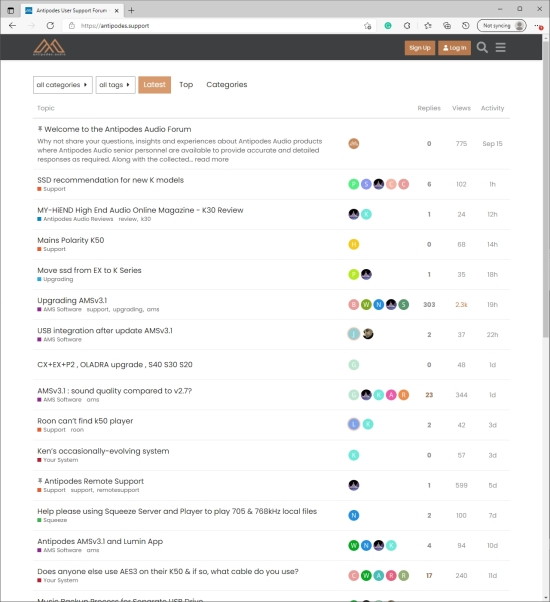
Only one click away from your Dashboard, you can chat with and message other users, browse the forum, access technical support via live chat and instant messaging, or even book a one-on-one session.
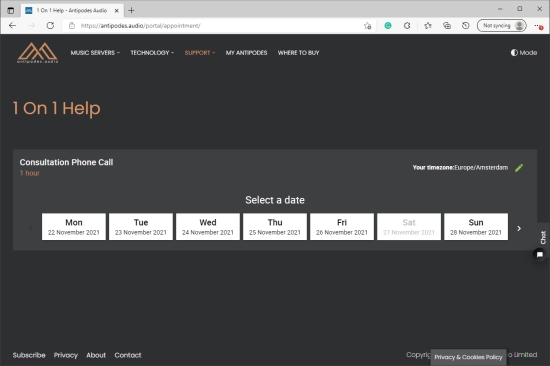
Needless to say, the Antipodes K50 is still a HFA Favorite!

Videos on the Hifi-Advice YouTube Channel
How Sooloos became Roon
Grimm MU1 and Antipodes K50
Try out Roon for yourself
External Links
Distributor and Retailer for the Netherlands: Ohm Audio
Manufacturer: Antipodes
Antipodes Connections explained: Antipodes Connections
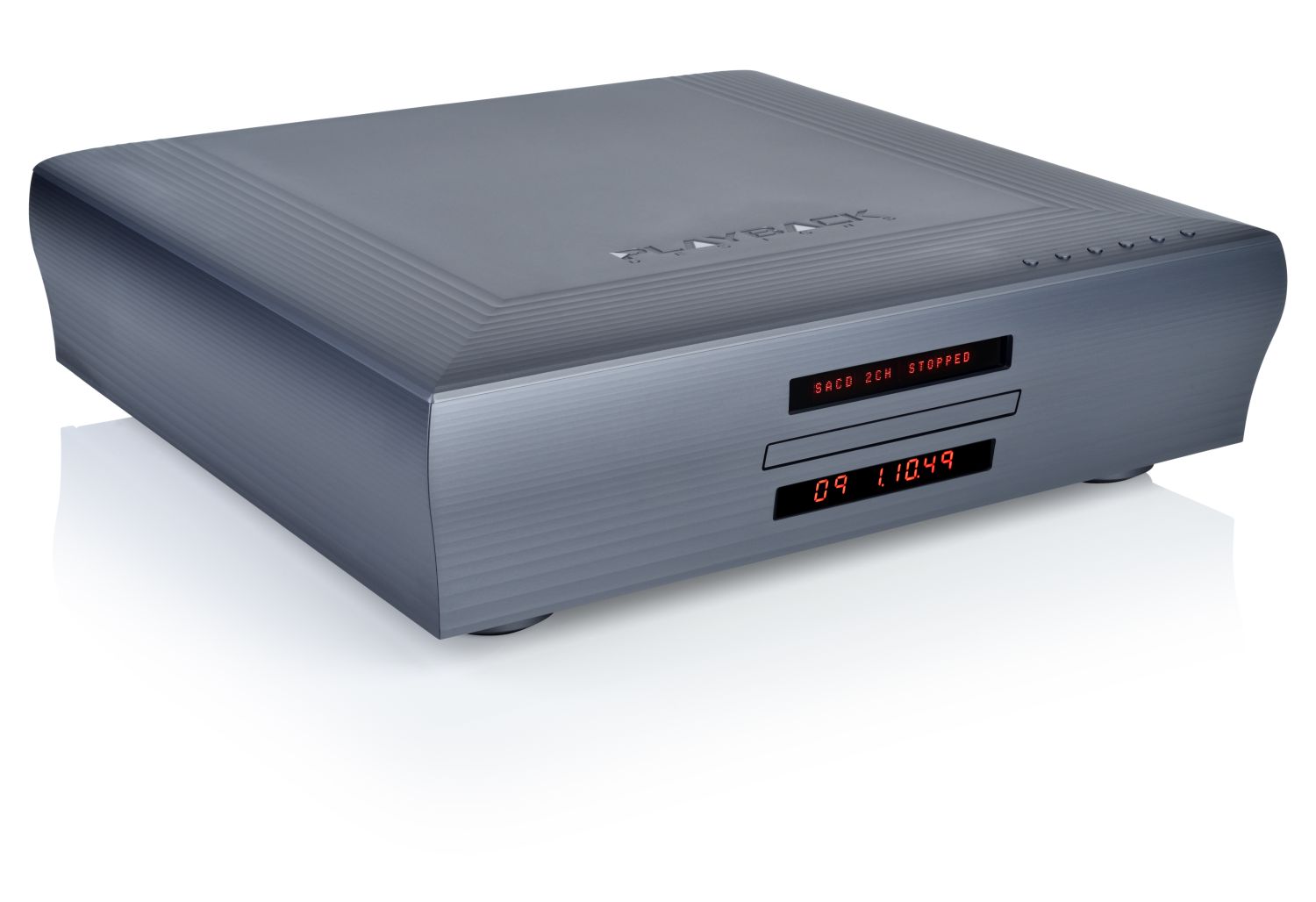







Hi Christiaan,
although I own an Antipodes S30/S60 combo I really enjoyed this article. Much the same can be said of the S30 – organic yet detailed sound and a long burn in period specifically. I upgraded from an ageing DS model which was struggling with Roon.
I set mine up myself using the Antipodes videos. They are a terrific tool and the site as a whole is marvellous, as is their online support.
In my email exchange with Mark he intimated that better sound can be achieved using Logitech Squeezebox. I replied that Roon has too many assets to ignore and he said I should try the Squeeze Player with Roon. Have you tried either of these configurations?
I will try the second option for sure, one day but at the moment I am just enjoying my music too much to experiment.
regards, IanR
Hi Ian, I agree, the Antipodes website and help integration are fantastic. Indeed, I tried Squeeze with Roon and I think I also reported this in one of the articles, not sure which one. In short: it tightens up the bass and provides slightly snappier midrange transients compared to the slightly rounder, more relaxed, and tonally fuller-sounding Roon RAAT. Not using Roon and going MPD provides even more control, tightness, expression, and transient snap. However, the Roon interface remains king. Anyway, configuring Antipodes and Roon to use Squeze is easy and risk-free. But I also agree not to change anything while you’re happy!
Hi Christian, will you be reviewing the Antipodes Oladra at some stage? Love your work!
I’ve expressed my interest, but so far, I’ve not been taken up on this. Time will tell:-)
Hi Alexander, good news: I will indeed do an OLADRA review soon:-)